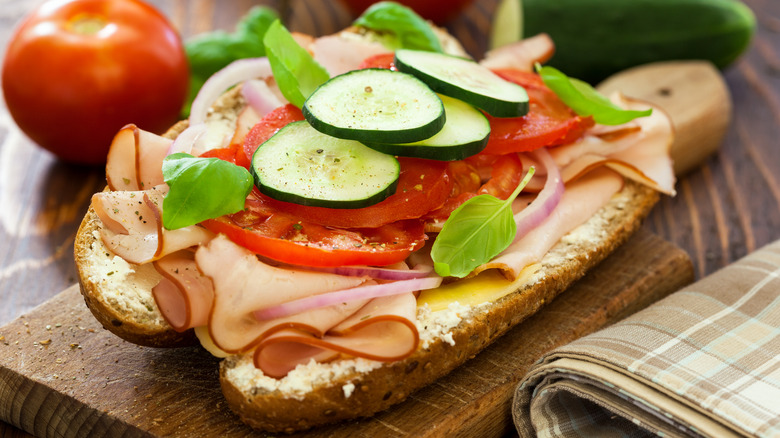Guy Fieri's Tip For Beginner Cooks Puts A Spotlight On Texture
Sometimes watching a TV chef throw together ingredients in their studio kitchen like it's nothing can discourage rather than encourage a novice cook. Thankfully we have Guy Fieri, part celebrity chef and part coolest-dude-at-the-school-disco cosplayer, to help. Speaking to Business Insider, Fieri offered some sound beginner's tips to help fledgling cooks along. Paying attention to texture was near the top of his list of recommendations.
Whatever you're making, even if it's something as simple as a sandwich, Fieri posits that intelligently mixing a variation of "great ingredients" in a way that juxtaposes the soft and the crunchy, the sweet and the acidic, etc., is the key to a delicious meal.
Balancing flavors and textures embedded itself at an early age for Fieri, who learned a lot from the way his mother made granola (via Today). "I just look for the texture," he told Business Insider. "I like there to be nuts in it, but just a little bit of yoghurt, just to [add] moisture and kind of smooth it out a bit." Simply by being mindful of the juxtaposition of textures and how they balance each other out, you're well on the path to greatness in Fieri's book.
Why do we like different textures in food?
Fieri isn't the only one who stands by this rule. Just as with our love for crunchy foods, our desire for textural difference comes down to science. We are sensory creatures, and the act of eating is a distinctly sensory experience, one that interacts with each of the five senses in kind. We determine a food's texture based on sensory receptors in the mouth. The sound each mouthful makes when we chew it has an influence as well. Texture perception varies considerably depending on the individual, with our tongue muscles shown to play a key role in defining taste and texture (via Food Research International).
Research has also shown that flavor is not enough to identify a food, or even to suitably categorize it, with only 40% of pureed foods being correctly identified by taste alone (via Physiology & Behavior). We require texture not only to recognize a food's general mouthfeel but also to perceive taste characteristics. When food only has one texture, it's doomed to be a simplistic experience. By combining different textures, such as soft bread with crunchy lettuce, smooth mustard, and rich meat in a deli sandwich, you're sending your brain on a textural journey that will keep it, and your taste buds, interested in every bite.

